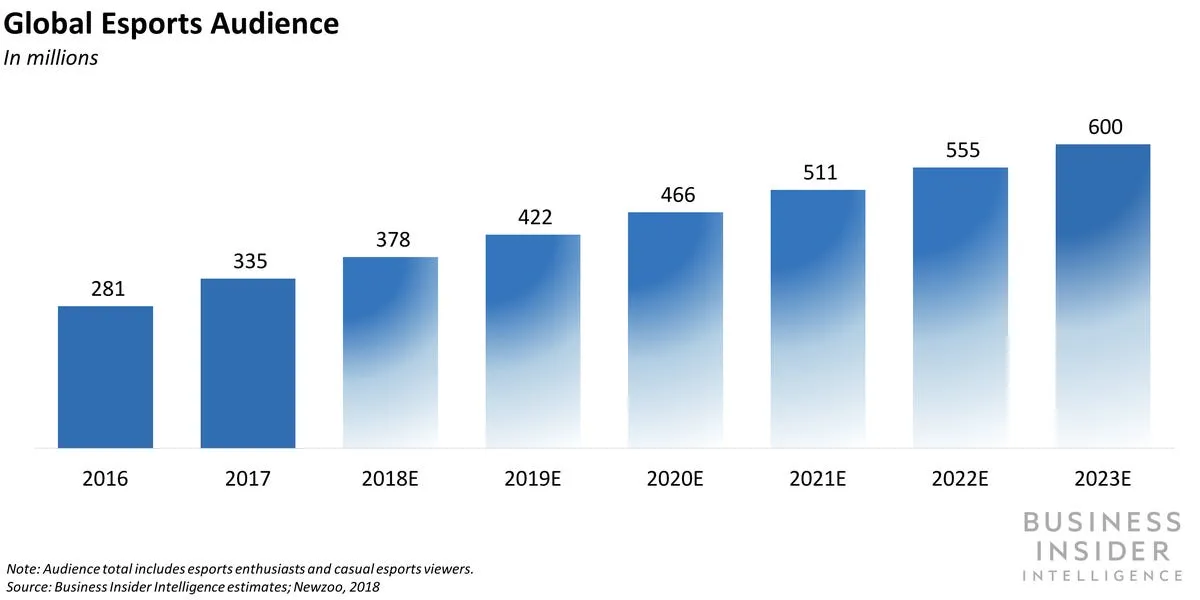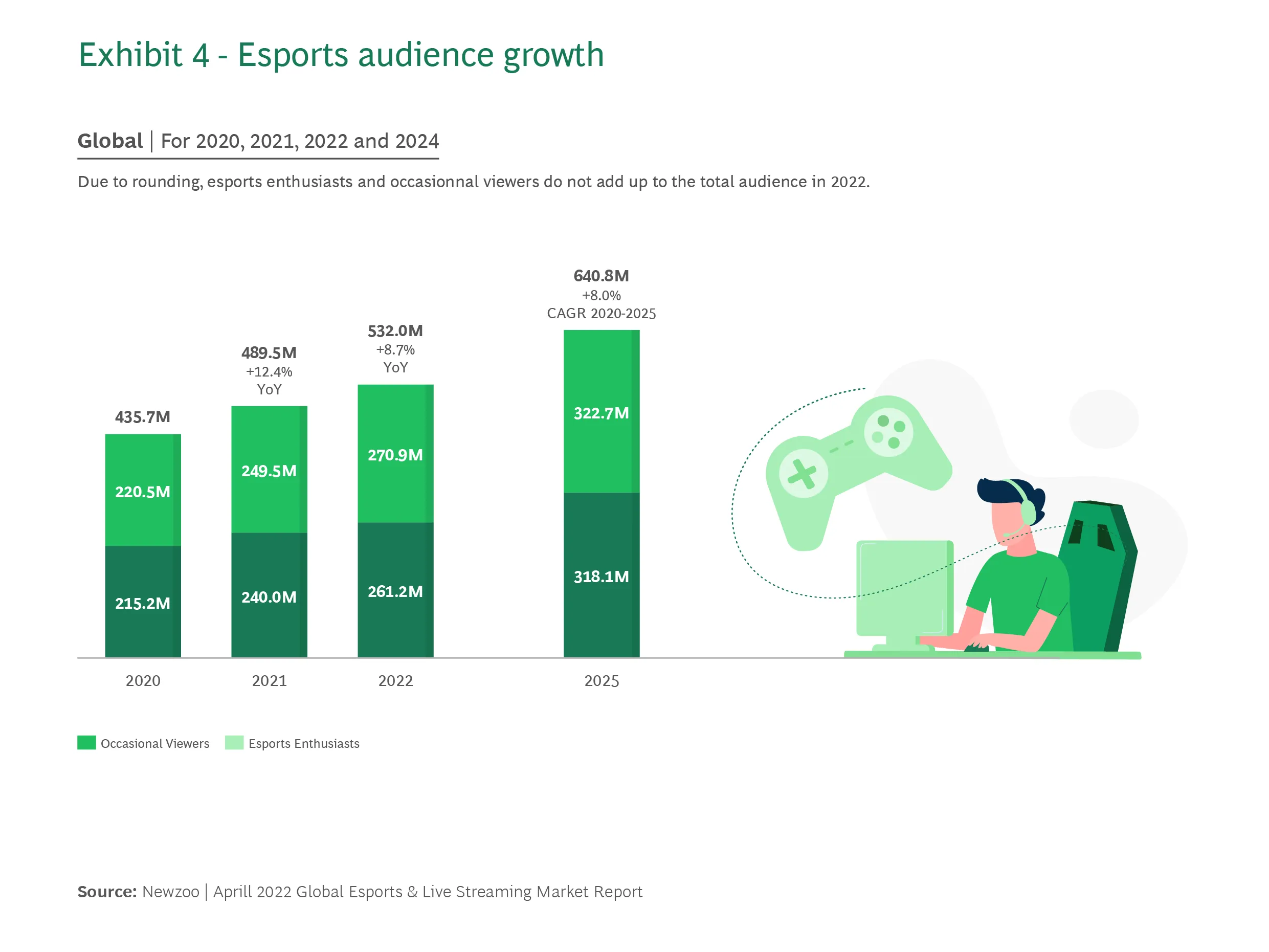Esports Viewership Statistics The Rising Popularity of Competitive Gaming
In recent years, the world of competitive gaming, also known as esports, has been gaining immense popularity. With millions of viewers tuning in to watch their favorite teams and players battle it out in various video games, esports is quickly becoming a mainstream form of entertainment. This rise in viewership has not only captured the attention of gamers but also the general public, leading many to wonder about the current state and future potential of esports.
In this article, we will dive into the statistics and data surrounding esports viewership, exploring its growth, demographics, and impact on the gaming industry. We’ll also discuss the reasons behind its surge in popularity and what this means for the future of competitive gaming. So let’s take a closer look at the numbers and trends that have made esports one of the fastest-growing industries in the world.
History of Esports Viewership

History of Esports Viewership
Competitive gaming has been around since the early days of video games. However, it wasn’t until the late 1990s that esports started gaining traction as a legitimate form of entertainment. The first major tournament, the Red Annihilation Quake tournament, took place in 1997 with a prize pool of $10,000. While this may seem small compared to today’s tournaments with multi-million dollar prize pools, it was a significant moment in the history of esports.
Over the next decade, esports continued to grow, with various tournaments and leagues emerging for popular games like Counter-Strike, StarCraft, and Warcraft III. However, it wasn’t until the launch of streaming platforms like Twitch in 2011 that esports truly took off. This allowed viewers to watch live matches from the comfort of their own homes, eliminating the need to attend physical events.
Since then, esports viewership has experienced exponential growth, with more and more people tuning in each year to watch their favorite games and players. Let’s take a closer look at some of the statistics that showcase this growth.
The Growth of Esports Viewership
According to a report by Newzoo, a leading market intelligence firm specializing in gaming and esports, the global esports audience reached 495 million in 2020, a year-over-year growth of 11.7%. This number is expected to continue rising, with an estimated audience of 577 million by 2024.
Additionally, the report states that the number of occasional viewers (those who watch esports content less than once a month) reached 222 million in 2020, while frequent viewers (those who watch esports content more than once a month) reached 274 million. This shows that not only are more people watching esports, but they are also tuning in more frequently, indicating a growing interest in the industry.
Popular Games in Esports
While there are numerous video games played competitively, certain titles have dominated the esports scene in terms of viewership. According to data from Esports Charts, the most-watched games in 2020 were League of Legends, CS:GO, and Dota 2. These three titles alone accounted for over half of all hours watched on Twitch, the leading streaming platform for esports.
League of Legends, a multiplayer online battle arena game developed by Riot Games, consistently ranks as the most-watched esport since its release in 2009. In 2020, it had over 5 billion hours watched on Twitch, over double the amount of its closest competitor, CS:GO. This just goes to show the immense popularity of the game and its competitive scene.
Demographics of Esports Viewers
Esports viewership is not limited to a specific age group or gender. In fact, it has a diverse audience, with fans coming from various backgrounds. However, like any form of entertainment, there are certain demographics that make up a significant portion of the viewership.
Age and Gender
According to a report by Nielsen, a global measurement and data analytics company, the majority of esports viewers fall between the ages of 18-34, with 53% falling in this age range. This aligns with the average age of gamers, which is 35 years old.
In terms of gender, the audience is predominantly male, with men making up 75% of the total viewership. However, this gender gap is slowly decreasing, with more and more women getting involved in competitive gaming as players and viewers.
Region
Esports has a global audience, with fans from all over the world tuning in to watch their favorite games and teams. According to Newzoo’s report, Asia-Pacific is the largest region for esports viewership, accounting for 57% of all occasional viewers and 61% of all frequent viewers. This is followed by North America and Europe, with 20% and 16% respectively.
Factors Contributing to the Rise in Esports Viewership

Factors Contributing to the Rise in Esports Viewership
There are numerous factors that have contributed to the surge in esports viewership in recent years. Let’s take a closer look at some of the key reasons behind this growth.
Increased Accessibility
One of the main reasons for the rise in esports viewership is the increased accessibility of content. With the advent of streaming platforms like Twitch and YouTube Gaming, fans can now easily watch live matches and highlights from the comfort of their own homes. This eliminates the need to travel to physical events, making it easier for people to follow and support their favorite teams and players.
Additionally, most streaming platforms allow viewers to interact with the content in real-time, whether through chat or donations, creating a more engaging and immersive viewing experience.
Mainstream Media Coverage
Another factor contributing to the popularity of esports is the increasing coverage by mainstream media. In recent years, major networks such as ESPN and BBC have started airing esports tournaments and events, bringing competitive gaming to a wider audience. This has helped legitimize esports as a form of entertainment and attract new viewers who may not have been exposed to it otherwise.
Celebrity Endorsements
As esports continues to gain mainstream recognition, more and more celebrities are getting involved in the industry. From famous athletes investing in esports teams to musicians and actors attending events and voicing their support for the industry, celebrity endorsements have helped raise the profile of competitive gaming and attract new viewers.
Impact of Esports Viewership on the Gaming Industry
The rise in esports viewership has had a significant impact on the gaming industry as a whole. Let’s take a closer look at some of the ways in which this growth has influenced the industry.
Increased Prize Pools
As viewership grows, so does the demand for top-tier competitive events. This has led to a significant increase in prize pools for major tournaments. For instance, the total prize pool for The International 2021, an annual Dota 2 tournament hosted by Valve Corporation, was over $40 million, making it one of the largest prize pools in all of esports.
This increase in prize money not only attracts top talent to the industry but also serves as a testament to the legitimacy and potential profitability of esports.
Sponsorship Opportunities
Esports viewership has also created a lucrative market for sponsorships and partnerships. With millions of people tuning in to watch tournaments and matches, brands have taken notice and started investing in esports teams and events. In 2020, global sponsorship revenue for esports reached an estimated $636.9 million, with brands like Coca-Cola, Red Bull, and Intel sponsoring major events and teams.
This influx of sponsorship deals has provided additional revenue streams for players and organizations, allowing them to further invest in the industry and make it more sustainable.
Growth in the Gaming Industry
The growth of esports viewership has also had a direct impact on the gaming industry. As more people tune in to watch competitive matches, there is an increased interest in the games being played, leading to a rise in sales and player numbers. For instance, the popularity of League of Legends as an esport has contributed to its success as a game, with over 115 million monthly active players as of 2021.
This symbiotic relationship between esports and the gaming industry is expected to continue, with the success of one influencing the other.
Challenges and Future of Esports Viewership

Challenges and Future of Esports Viewership
While the current state of esports viewership may seem overwhelmingly positive, there are still some challenges and potential roadblocks that could affect its future growth. Let’s take a look at some of these challenges and how they could impact the industry.
Lack of Mainstream Acceptance
Despite the increasing viewership and recognition, esports still faces criticism and skepticism from mainstream media and traditional sports fans. This lack of acceptance can be attributed to various factors, including the perception of video games as a solitary activity and the belief that esports doesn’t require physical skill or athleticism.
However, as more and more people get exposed to esports and see its potential as a form of entertainment, this stigma is slowly dissipating. The inclusion of esports in major events like the Asian Games and the Olympics further solidifies its legitimacy and helps it gain mainstream acceptance.
Revenue Sharing and Player Salaries
Another challenge facing esports, specifically players and organizations, is the issue of revenue sharing and player salaries. Unlike traditional sports, where players earn a portion of the revenue generated by the league or team, esports players often rely solely on tournament earnings and sponsorships for their income.
With the growth of esports viewership, there have been calls for better revenue sharing models to ensure that players receive fair compensation for their contributions to the industry. As the industry continues to mature, it’s likely that we will see more standardized contracts and revenue sharing agreements for players and teams.
The Future of Esports Viewership
Despite these challenges, the future looks bright for esports viewership. With recent reports projecting continued growth in both audience numbers and revenue, the potential for this industry is immense. Additionally, as technology and infrastructure continue to improve, it’s expected that esports events will become even more immersive and accessible, attracting even more viewers.
Moreover, the rise of mobile gaming and the increasing popularity of esports titles on mobile devices could open up a whole new market for competitive gaming, further adding to its viewership numbers.
Conclusion
In conclusion, the statistics and data surrounding esports viewership paint a clear picture of an industry that is rapidly growing and evolving. From its humble beginnings in the late 1990s, competitive gaming has come a long way, with millions of people now tuning in to watch their favorite games and players.
While there are still challenges to overcome, the future looks bright for esports viewership. With increased accessibility, mainstream recognition, and a growing number of sponsorship and revenue opportunities, it’s safe to say that competitive gaming is here to stay. So whether you’re a fan or a skeptic, one thing is for sure, esports is no longer just a niche form of entertainment, but a global phenomenon that is only going to get bigger and better in the years to come.













Post Comment